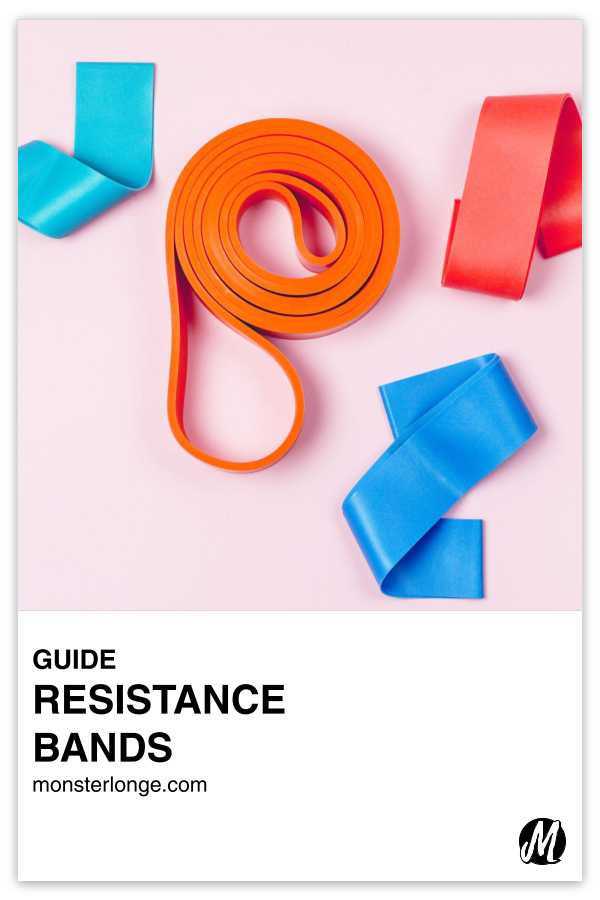
Resistance Bands
Resistance, or exercise, bands are any of the class of stretchable strength training implements that create tension as they’re pulled. According to research, they’re as effective at building muscle as weights are, giving further proof to the adage that you can’t judge things off appearance alone. So how do bands increase strength and size like a barbell or dumbbell does with a shitload of weight on it?
One way resistance bands work is by providing “accommodating resistance”, which is when tension is placed on the muscle throughout the entire range of motion rather than at a specific point, resulting in the recruitment of more muscle fibers in the target muscle. This is something that free weights don’t do.1For instance, the biceps lose tension toward the top of the movement when performing dumbbell and barbell curls. With a band, however, the biceps remain at peak contraction at the top of the movement because there’s increasing resistance as the band elongates to complete the curl. Second, bands provide constant tension like cable machines do, with tension placed on the muscle when you stretch the band out and then as you resist the stored energy in the band driving down on the muscle to return it to the starting position.
The third way that bands increase strength is by changing the line of pull. Free weights rely on gravity for resistance and only provide that resistance in one plane of movement. For example, when performing a dumbbell curl, there’s resistance in the vertical plane as you move your arm up and down in the direction of gravity. However, there’s nothing going on in the horizontal plane, or to the left and right, as you lift because gravity isn’t providing resistance there. Because bands don’t rely on gravity, you’re able to get resistance from all planes of movement as you perform an exercise, which not only helps build the target muscle but the stabilizer muscles as well.2Because of the role of gravity, it should also be mentioned that bands are easier on the joints than weights. So if you have joint issues or are recovering from an injury, that’s something to bear in mind.
Color coded by their resistance level, resistance bands come in various styles and makes and some are better for certain activities than others. So which is best for you?
It depends!
Want to work on your glutes and maybe throw in one or two upper body exercises because the glutes aren’t the only muscle group in existence? Then go with mini-bands.
Only want to work on your glutes because you still haven’t come to the realization they aren’t the only muscle group in existence? Get yourself a pair of hip circles.
Looking to supplement your lifts at the gym and possibly work out your entire body when you don’t have access to one? Then you can’t go wrong with powerlifting strength bands.3Also known as assisted pull-up bands because they’re commonly used for pull-ups.
Just need something to travel with so you can get a workout in on the road because the city or town where you live is the only place in the world where a gym is to be found?4It baffles my mind when people say they can’t work out because they were traveling. Unless I specifically plan on taking a break while on vacation or whatever, I conduct a Google search for local gyms as soon as I arrive at my travel destination, if not before even leaving. Resistance tubes should do the trick!
Glossary: barbell, biceps, dumbbell, exercise, glutes, gym, muscle, muscle group, work out, workout
- How To Eat Healthy During Thanksgiving - November 20, 2024
- Weight Loss Tip: no.2620 - November 20, 2024
- Is Going To The Gym Once A Week Enough? - November 19, 2024
